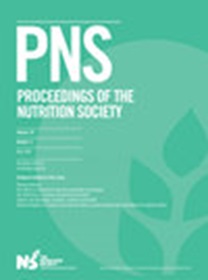青少年赛艇运动员的膳食摄入--能量摄入分析
摘要
充足的能量摄入(EI)对青少年运动员的健康、表现和成长至关重要(1)。赛艇是一项对体力要求很高的运动,青少年时期就开始接受高强度训练。需要开展研究来评估当前的能量摄入是否足以支持青少年赛艇运动员的健康生理功能和训练。本研究旨在评估新西兰青少年赛艇运动员的能量状况(能量可用性(EA)或能量平衡(EB)),包括 EI 和运动能量消耗(EEE)。共有 35 名参加过至少一个赛季赛艇运动的运动员(23 名女性,16.8 岁 ± 1.9 岁;12 名男性,17.3 岁 ± 1.6 岁)参加了这项研究。生物阻抗分析仪测量了 11 名参与者的身体成分(8 名女性,体重为 63.0±7.0 千克,无脂肪含量(FFM)为 50.8±6.5 千克;3 名男性,体重为 78.5±15.9 千克,无脂肪含量为 70.7±12.2 千克),从而计算出 EA。由于 COVID-19 的限制,其余 24 名参与者(15 名女性,9 名男性)提供了估计体重(74.7 ± 9.2 千克),然后使用 EB 评估能量状况。所有参与者均完成了四天的饮食和训练日记,其中两天为 "恢复 "训练日,两天为 "艰苦 "训练日。EI是在FoodWorks10软件中使用新西兰食物成分数据库测定的。在训练中,使用体重、心率和感知努力程度来估算 EEE,并分配任务的代谢当量 (MET)(2)。使用配对样本 t 检验或 Wilcoxon Signed Rank 检验(非参数数据)来确定每个性别在高训练日和低训练日的 EI、EEE、EA 和 EB 之间的差异。显著性设定为 p<0.05。女性在训练日和恢复日的平均 EI 分别为 10837 ± 3304kJ 和 10461 ± 2882kJ,男性分别为 15293 ± 3971kJ 和 13319 ± 4943kJ。男女在艰苦日与恢复日的 EI 之间没有发现明显差异。艰苦训练日与恢复训练日的平均 EEE 之间存在显著差异(女性,艰苦训练日为 4609 ± 2446kJ,恢复训练日为 3146 ± 1905kJ,p<0.001;男性,艰苦训练日为 6589 ± 1575kJ,恢复训练日为 3326 ± 2890kJ,p = 0.001)。艰苦训练日和恢复训练日的 EA 分别为 142 ± 80kJ/FFMkg/day 和 167 ± 79kJ/FFMkg/day,属于次优水平,艰苦训练日和恢复训练日的 EA 没有显著差异(p = 0.092)。艰苦训练日的平均 EB 为 -484 ± 4267kJ,恢复训练日的平均 EB 为 572 ± 3265kJ,训练日之间无显著差异(p = 0.177)。在艰苦训练日和恢复训练日之间,男女的 EB 均无明显差异(女性 p = 0.221,男性 p = 0.978)。结果表明,青少年赛艇运动员并没有根据 EEE 调整营养摄入量。这可能会增加青少年赛艇运动员出现 EB 或 EA 不达标的风险,其中女性比男性的风险更大。Adequate energy intake (EI) is essential for adolescent athletes to support health, performance, and growth(1). Rowing is a physically demanding sport where intense training begins in adolescence. Research is needed to assess whether current EI is sufficient to support healthy physiological functions and training in adolescent rowers. The aim of this study was to evaluate the energy status (energy availability (EA) or energy balance (EB)) including EI and exercise energy expenditure (EEE) of adolescent rowers in New Zealand. A total of 35 rowers (23 females, 16.8yrs ± 1.9yrs; 12 males, 17.3yrs ± 1.6yrs) who had been rowing for at least one season participated. A bioimpedance analyser measured body composition in 11 participants (8 females, weight 63.0±7.0kg, fat free mass (FFM) 50.8 ± 6.5kg; 3 males, weight 78.5 ± 15.9kg, FFM 70.7 ± 12.2kg) enabling calculation of EA. Due to COVID-19 restrictions, the remaining 24 participants (15 females, 9 males) provided estimated body weight (74.7 ± 9.2kg) and EB was then used to evaluate energy status. All participants completed four days of food and training diaries, two ‘recovery’ and two ‘hard’ training days. EI was determined in FoodWorks10 software using the New Zealand Food Composition Database. For training, metabolic equivalent of tasks (MET)(2) were assigned using bodyweight, heart rate, and rating of perceived effort to estimate EEE. Paired sample t-tests or Wilcoxon Signed Rank test (non-parametric data) was used to determine differences between EI, EEE, EA, and EB on the high and low training days for each gender. Significance was set at p< 0.05. The average EI for females on hard and recovery days was 10837 ± 3304kJ and 10461 ± 2882kJ respectively, and for males was 15293 ± 3971kJ and 13319 ± 4943kJ, respectively. No significant differences were found between EI on hard vs. recovery days in both genders. Significant differences between average EEE on hard vs. recovery days were found in both genders (females, hard day 4609 ± 2446kJ, recovery day 3146 ± 1905kJ, p<0.001; males, hard day 6589 ± 1575kJ, recovery day 3326 ± 2890kJ, p = 0.001). EA on hard and recovery training days was classified as suboptimal at 142 ± 80kJ/FFMkg/day and 167 ± 79kJ/FFMkg/day respectively with no significant difference in EA between hard and recovery days (p = 0.092). Average EB on hard training days was −484 ± 4267kJ and on recovery training days was 572 ± 3265kJ, with no significant difference between training days (p = 0.177). Both genders showed no significant difference in EB between hard and recovery training days (females p = 0.221, males p = 0.978). The results suggest that adolescent rowers do not adjust their nutritional intake to match EEE. This may increase the risk of adolescent rowers presenting with suboptimal EB or EA, with females being at a greater risk than males.

 求助内容:
求助内容: 应助结果提醒方式:
应助结果提醒方式:


